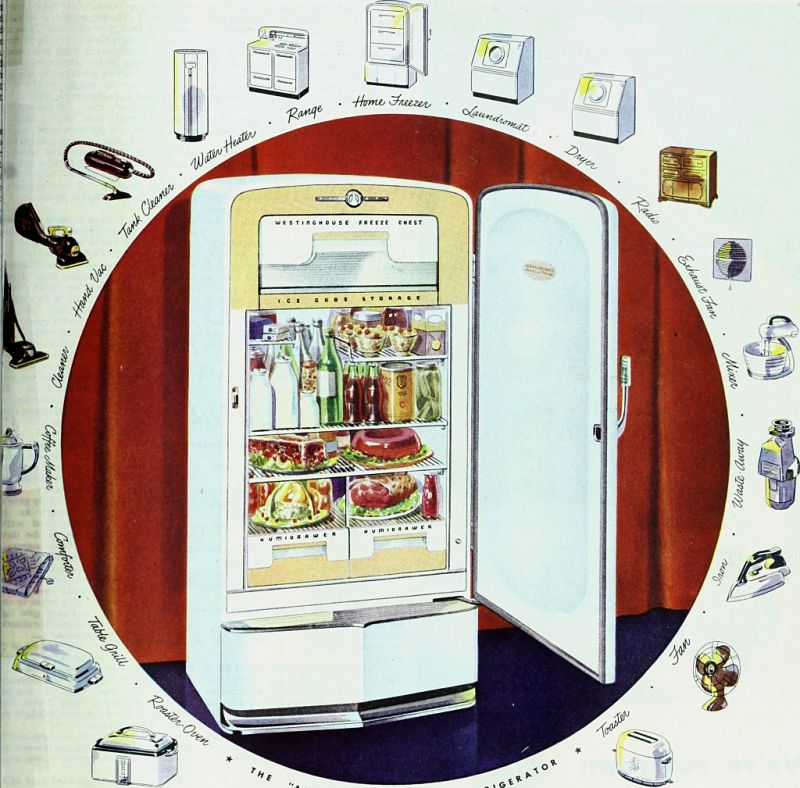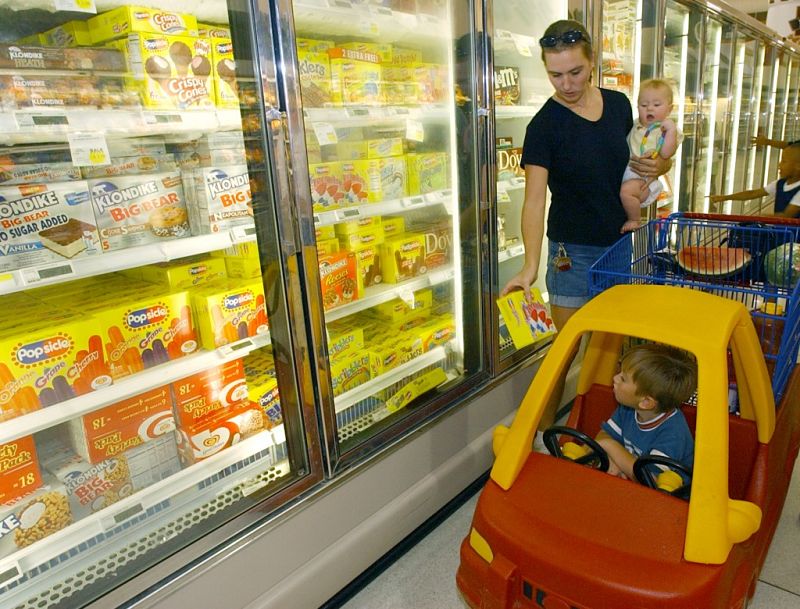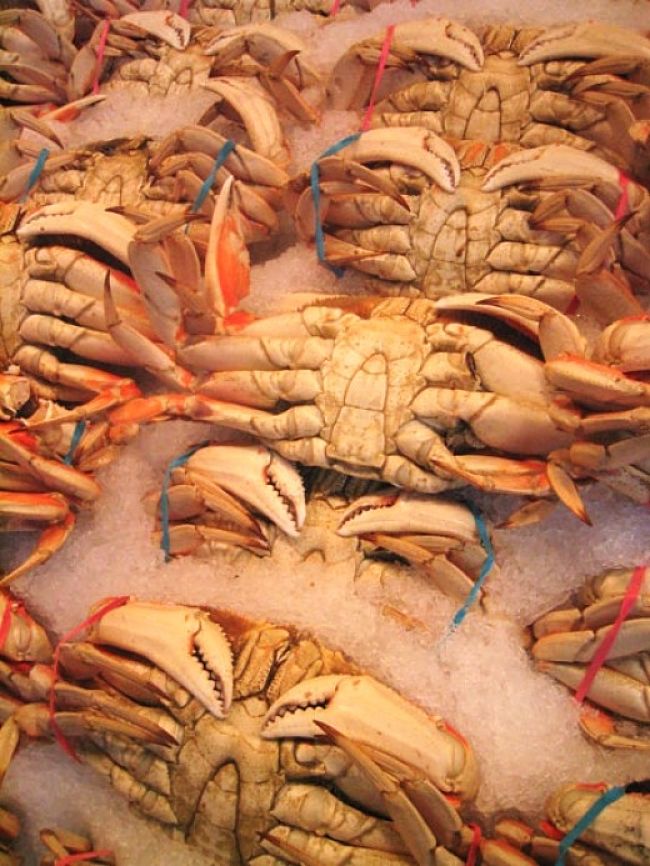Q&A Can You Safely Refreeze Thawed Foods - Refreezing Myth Dispelled?
Most people abide by the principle that you cannot safely refreeze foods that you have bought frozen and thawed. Fish and seafood is a special can because most so-called 'fresh fish' has been frozen and then thawed for selling the fish. However, it turns out that the idea that you cannot refreeze thawed foods is a classic myth.
According to the USDA Food Safety and Inspection Service, it is safe to refreeze raw items, processed food items such and ham, fish, seafood or meats, add also cooked food, provided that the food items have been thawed properly and not left at room temperature for tool long, so that they are contaminated.
Food to be refrozen should have been thawed in the refrigerator, not on the counter or bench top at room temperature. Food that has been kept warm for long periods of time is also unsuitable. Similarly food that has been kept in the refrigerator past the recommended storage time is also unsuitable.

The fridge-freezer has revolutionized the way we store food. But care is need to thaw and refreeze foods. Learn how to do it safely in this article.

More and more food items are being bought frozen. Learn how to thaw foods safely and when thawed foods can be re-frozen.

Most seafood sold as 'fresh' has been frozen and thawed. You can re-freeze it provided it has not being thawed for too long in the refrigerator and not kept at room temperature.
What Fresh Foods are Safe When Thawed and Re-frozen?
Most meats, fish and seafood are safe. This includes raw meat (beef, lamb, pork and game meats), poultry (chicken, turkey and duck), fish and seafood.
However, all food items have a recommended maximum storage times for the refrigerator and freezer, which are summarized in the table below. So if you have kept the food in the fridge for half these times it is unwise to refreeze them. Similarly if the food has been left at room temperature for an hour or more, or kept warm before serving, it is unwise to refreeze it. While heating food to boiling point can kill bacteria, freezing does not kill pathogens.
Similarly, do not thaw frozen meat, poultry, fish or seafood at room temperature because bacteria can multiply rapidly at room temperature. Thawing should be done in the refrigerator which impedes bacteria growth. However, as shown in the table below do not let thawed raw meat remain in the refrigerator too long before refreezing it, because the meat can spoil and may be beyond the same storage temperature. Remember that the storage times in the refrigerator, before and after refreezing should be added together. If meat of cooked food are refrozen they should be used immediately after being thawed.
Likewise it is unwise to refreeze raw meat or fish that you have defrosted using your microwave oven, or by thawing using warm water. If you thaw frozen food by sitting it in cold water, keep the frozen food in its plastic packaging. Also, replace the water every 30 minutes or so until it’s thawed. Use the meat immediately by cooking it. You should not put meat thawed in this way back in the fridge or refreeze it. Thawing meat in cold water or in the microwave oven is equivalent to thawing at room temperature. There is sufficient time at warm temperatures for bacteria to proliferate.
Poultry should not be refrozen, even after thawing in the refrigerator because of its reputation as the worse in terms of contamination.
All foods that are thawed, especially those that are thawed for the second time should be cooked or eaten eaten within a day of being thawed in the refrigerator, which generally takes about 24 hours. This applies for chicken, fish, shrimp and shellfish. Seafood is often frozen for storage before being thawed and presented as 'fresh'.
You can generally refreeze cooked foods and dishes provided the foods have been handled properly and are showing no signed of being spoiled. It is safe to thaw and then refreeze breads, cakes, frozen fruit, vegetables, processed foods and other food items. However, the process can badly affect their taste, texture color. Many items can be dried out, or become mushy when thawed. The best advice is to only thaw enough frozen food that you need.
Maximum Safe Storage Times for Common Foods - Fridge and Freezer
Recommended Maximum Storage Times for Foods in the Refrigerator and Freezer. Do not Refreeze foods that have been kept in the fridge for half these times
Food Type
| Recommended Storage time in the Refrigerator
| Recommended Storage time in the Freezer
|
|---|---|---|
Sausage, raw — from chicken, turkey, pork, beef
| 1 to 2 days
| 1-2 months
|
Hamburger, ground beef, turkey, veal, pork, lamb, & mixtures of them
| 1 to 2 days
| 3-4 months
|
Chicken or turkey, whole
| 1 to 2 days
| 12 months
|
Chicken or turkey, pieces
| 1 to 2 days
| 9 months
|
Hot dogs - opened package
| 1 week
| 1-2 months
|
Hot dogs - opened package
| 2 weeks
| 1-2 months
|
Luncheon meat, Ham – unopened package
| 2 weeks
| 1-2 months
|
Soups and Stews - Vegetable or meat added
| 3 to 4 days
| 2-3 months
|
Leaftover – Cooked meat or poultry
| 3 to 4 days
| 2-6 months
|
Leftover – Chicken nuggets or patties
| 3 to 4 days
| 1-3 months
|
Leftover – Pizza
| 3 to 4 days
| 1-2 months
|
Egg, chicken, ham, tuna & macaroni salads
| 3 to 5 days
| Freezing inappropriate
|
Luncheon meat, Ham – opened package or deli sliced
| 3 to 5 days
| 1-2 months
|
Fresh Beef, Veal, Lamb and Pork - Steaks
| 3 to 5 days
| 6-12 months
|
Fresh Beef, Veal, Lamb and Pork – Chops
| 3 to 5 days
| 4-6 months
|
Fresh Beef, Veal, Lamb and Pork – Roasts
| 3 to 5 days
| 4-12 months
|
Bacon
| 7 days
| 1 month
|